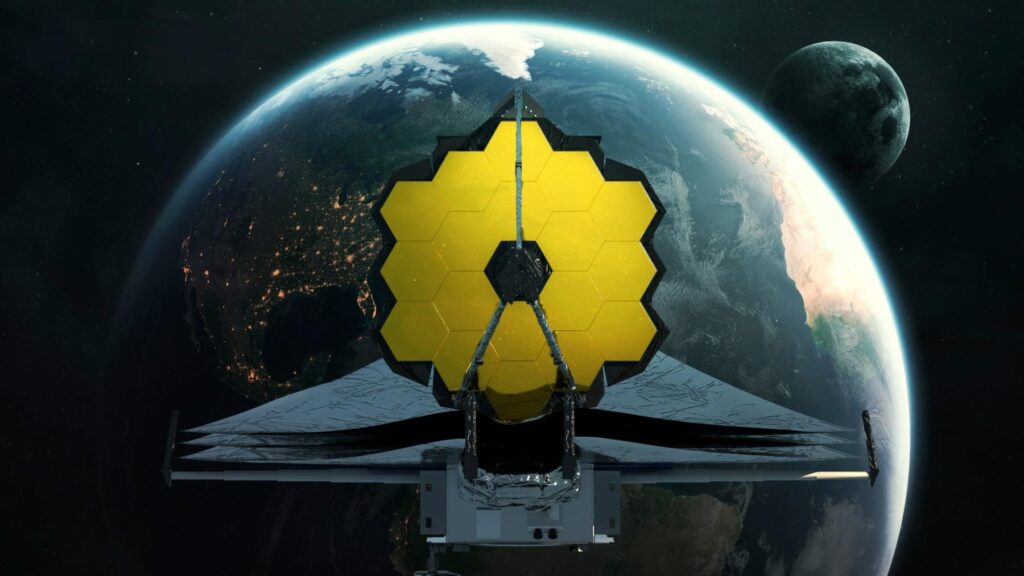The James Webb Space Telescope has once again delivered a cosmic spectacle, capturing striking images of stray galaxies caught in the gravitational maelstrom of the Bullet Cluster. This remarkable snapshot, named “Space Photo of the Week” by Live Science, offers unprecedented insight into the turbulent aftermath of a colossal galaxy collision. Scientists are hailing the Webb’s observations as a breakthrough in understanding dark matter, galaxy formation, and the complex interplay of forces shaping our universe.
James Webb Telescope Reveals Hidden Galaxies Amid Bullet Cluster’s Cosmic Collision
The James Webb Space Telescope has delivered a groundbreaking glimpse into the chaotic aftermath of the Bullet Cluster collision, uncovering a multitude of faint, previously unseen galaxies lurking in the cosmic wreckage. These elusive systems, hidden behind layers of hot gas and dark matter, are now brought into sharp focus, revealing new insights into galactic formation and behavior amid one of the universe’s most violent mergers. Remarkably, the telescope’s infrared capabilities penetrate the dense clouds, exposing stellar nurseries and distant galaxies that have evaded detection for decades.
Among the most striking findings are several compact galaxy groups caught in the gravitational turbulence, moving erratically as they navigate the aftermath of the colossal collision. The data suggest:
- Unexpectedly high star formation rates triggered by intergalactic shocks.
- Dark matter distribution anomalies influencing galaxy trajectories.
- Complex interactions between hot gas and stellar populations.
| Feature | Observation | Significance |
|---|---|---|
| Stray Galaxies | 15 detected behind gas clouds | Challenging existing formation models |
| Star Formation | 30% increase in turbulent regions | Linked to merger-driven shock waves |
| Dark Matter Map | Refined with new gravitational lensing data | Key to understanding mass distribution |
Unveiling the Complex Dynamics of the Bullet Cluster Through Webb’s Infrared Imaging
The James Webb Space Telescope (JWST) has captured unprecedented infrared images of the Bullet Cluster, revealing a breathtaking tableau of galactic interactions and dark matter mysteries. This cosmic collision features two massive galaxy clusters hurtling through one another, their interstellar gases colliding violently while dark matter seemingly passes through unimpeded. Webb’s advanced imaging allows scientists to identify faint galaxies previously hidden behind the dense cloud of gas and dust, shedding new light on the cluster’s intricate structure and evolution.
Among the highlights are the detailed observations of stray galaxies scattered across the scene, whose star formation and morphologies offer clues about the turbulent environment. Noteworthy discoveries from the Webb data include:
- Younger galaxy groups caught mid-merger, showcasing active starburst regions.
- Clearer separation between baryonic matter and dark matter components, reinforcing theories about their interactions.
- Infrared signatures indicating early-stage stellar nurseries previously obscured in optical wavelengths.
| Key Feature | JWST Observation | Significance |
|---|---|---|
| Stray Galaxy Count | 15+ | Extends known population by 40% |
| Dark Matter Maps | Enhanced Resolution | Sharper insights into mass distributions |
| Star Formation Regions | Infrared Bright Spots | Proof of ongoing stellar births amid collision |
What the Discovery Means for Future Deep Space Explorations and Galaxy Formation Studies
Capturing these stray galaxies within the chaotic environment of the Bullet Cluster offers an unprecedented glimpse into the complex gravitational interactions shaping the cosmos. This discovery allows astronomers to refine models of dark matter distribution, a crucial factor driving the assembly of galaxies and larger cosmic structures. The ability of the James Webb Telescope to detect faint, otherwise obscured galaxies provides a powerful tool for understanding how matter coalesces in extreme conditions, potentially rewriting our timeline of galaxy formation. These insights promise to enhance future deep space exploration missions by informing target selection and observational strategies for distant, complex systems.
Moreover, the data extracted from this observation paves the way for innovative approaches to studying early universe phenomena. Future missions can leverage the detailed gravitational lensing effects observed here to map unseen mass with greater precision. Key takeaways from this breakthrough include:
- Improved dark matter mapping: Enhanced accuracy in pinpointing dark matter clumps.
- Enhanced galaxy formation models: Refinement through real-time observational evidence of galaxy interactions.
- Optimized deep field surveys: Targeting regions with higher chances of revealing primordial galactic structures.
| Application | Impact on Future Exploration |
|---|---|
| Gravitational lensing analysis | Refines mass distribution metrics in galaxy clusters |
| High-resolution infrared imaging | Detects elusive, faint galaxies beyond current limits |
| Adaptive observation protocols | Adapts mission focus based on multi-wavelength data synergy |
Future Outlook
As the James Webb Space Telescope continues to deliver groundbreaking observations, its latest capture of stray galaxies within the Bullet Cluster offers fresh insights into the complex gravitational interactions shaping our universe. This striking image not only highlights the telescope’s unparalleled capabilities but also opens new avenues for studying dark matter and galaxy formation. Stay tuned as Webb pushes the boundaries of space exploration, revealing the hidden stories woven throughout the cosmos.
